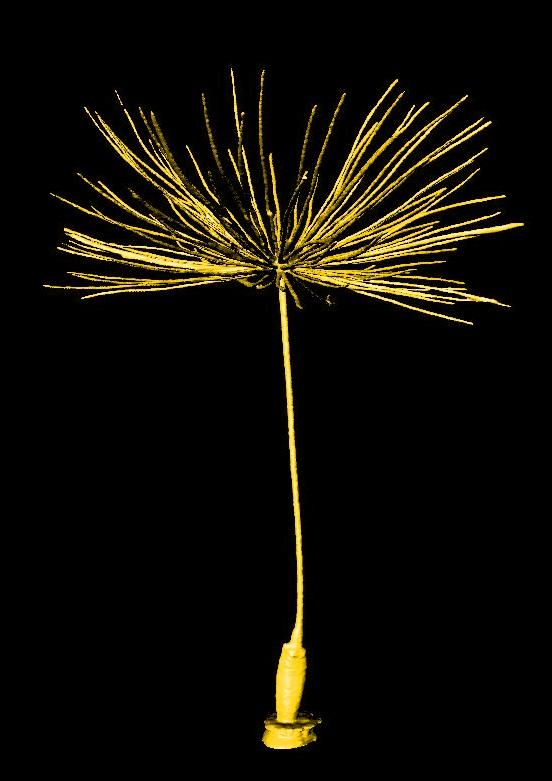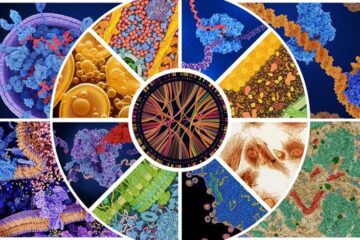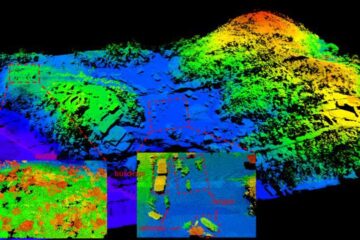Dandelion seeds reveal newly discovered form of natural flight

A ring-shaped air bubble forms as air moves through the bristles, enhancing the drag that slows their descent, according to new research from the University of Edinburgh. Credit: Naomi Nakayami
The extraordinary flying ability of dandelion seeds is possible thanks to a form of flight that has not been seen before in nature, research has revealed.
The discovery, which confirms the common plant among the natural world's best fliers, shows that movement of air around and within its parachute-shaped bundle of bristles enables seeds to travel great distances – often a kilometre or more, kept afloat entirely by wind power.
Researchers from the University of Edinburgh carried out experiments to better understand why dandelion seeds fly so well, despite their parachute structure being largely made up of empty space.
Their study revealed that a ring-shaped air bubble forms as air moves through the bristles, enhancing the drag that slows each seed's descent to the ground.
This newly found form of air bubble – which the scientists have named the separated vortex ring – is physically detached from the bristles and is stabilised by air flowing through it.
The amount of air flowing through, which is critical for keeping the bubble stable and directly above the seed in flight, is precisely controlled by the spacing of the bristles.
This flight mechanism of the bristly parachute underpins the seeds' steady flight. It is four times more efficient than what is possible with conventional parachute design, according to the research.
Researchers suggest that the dandelion's porous parachute might inspire the development of small-scale drones that require little or no power consumption. Such drones could be useful for remote sensing or air pollution monitoring.
The study, published in Nature, was funded by the Leverhulme Trust and the Royal Society.
Dr Cathal Cummins, of the University of Edinburgh's Schools of Biological Sciences and Engineering, who led the study, said: “Taking a closer look at the ingenious structures in nature – like the dandelion's parachute – can reveal novel insights. We found a natural solution for flight that minimises the material and energy costs, which can be applied to engineering of sustainable technology.”
Media Contact
More Information:
http://dx.doi.org/10.1038/s41586-018-0604-2All latest news from the category: Life Sciences and Chemistry
Articles and reports from the Life Sciences and chemistry area deal with applied and basic research into modern biology, chemistry and human medicine.
Valuable information can be found on a range of life sciences fields including bacteriology, biochemistry, bionics, bioinformatics, biophysics, biotechnology, genetics, geobotany, human biology, marine biology, microbiology, molecular biology, cellular biology, zoology, bioinorganic chemistry, microchemistry and environmental chemistry.
Newest articles

A universal framework for spatial biology
SpatialData is a freely accessible tool to unify and integrate data from different omics technologies accounting for spatial information, which can provide holistic insights into health and disease. Biological processes…

How complex biological processes arise
A $20 million grant from the U.S. National Science Foundation (NSF) will support the establishment and operation of the National Synthesis Center for Emergence in the Molecular and Cellular Sciences (NCEMS) at…

Airborne single-photon lidar system achieves high-resolution 3D imaging
Compact, low-power system opens doors for photon-efficient drone and satellite-based environmental monitoring and mapping. Researchers have developed a compact and lightweight single-photon airborne lidar system that can acquire high-resolution 3D…





















